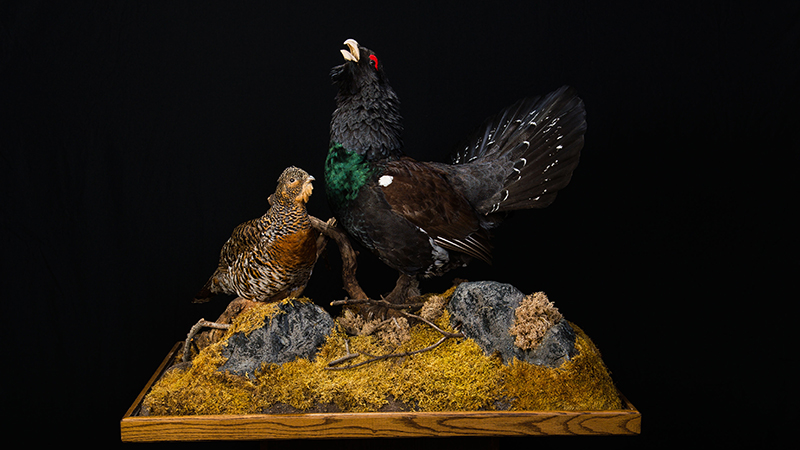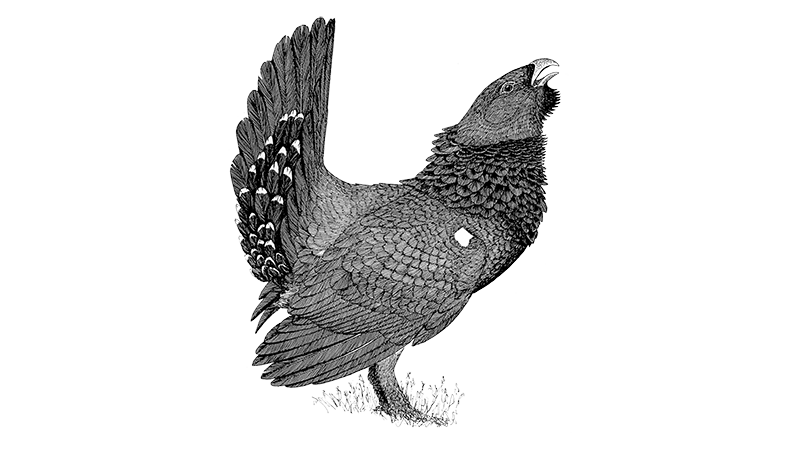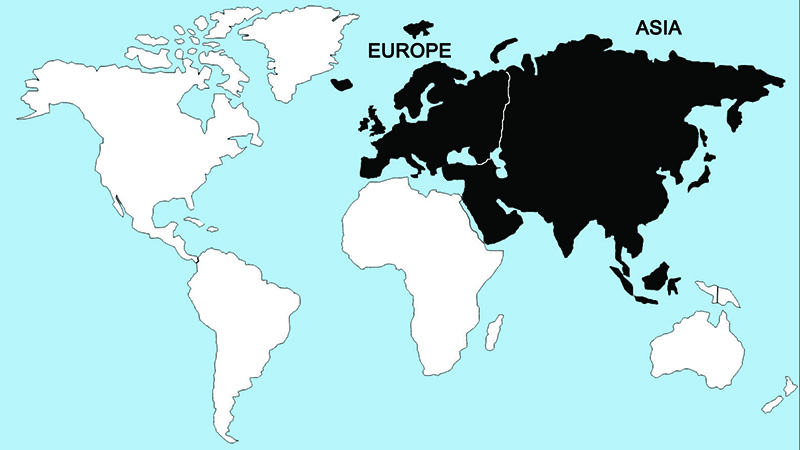Capercaillie

The capercaillie of the northern Eurasian coniferous forests is the largest of all grouse, with males weighing up to about 14 pounds (6.5 kg). Male capercaillies gather at traditional locations for territorial establishment and display. The “alpha” male maintains the largest territory, having a maximum area of about 30 acres (12 hectares) in spring and 25 acres (10.5 hectares) during fall.
Females do not normally roost in the display area but instead they fly in some time after display activity is underway, which may start shortly after midnight. From their perches the females gradually make their way to the territory of the dominant male. Nest sites are usually not far from such display grounds and at times may be somewhat clustered. The nests are shallow scrapes, in thick cover, often at the base of a tree. From 5–12 eggs are laid, with larger clutches of up to 16 almost certainly representing multiple clutches. The incubation period is 24– 26 days, and the young can fly when 2–3 weeks old.

Regions Birds Are Found

Collection Location & Year
Russia 2001
Taxonomy
| Order | Galliformes |
|---|---|
| Family | Phasianidae |
| Sub Family | Tetraoninae |
| Species | Tetrao |
| Genus | urogallus |
Gender
Female & Male
References
- Cramp, S., and K. E. L. Simmons, eds. 1980. The Birds of the Western Palearctic. Vol. 2. (Hawks to Bustards) London, UK: Oxford Univ. Press.
- Johnsgard, P. A. 1983. The Grouse of the World. Lincoln, NE: Univ. of Nebraska Press.
- del Hoyo, J. A. Elliot, and J. Sargatal, eds. 1994. Handbook of Birds of the World. Vol. 2 (New World Vultures to Guineafowl). Barcelona, Spain: Lynx Editions.